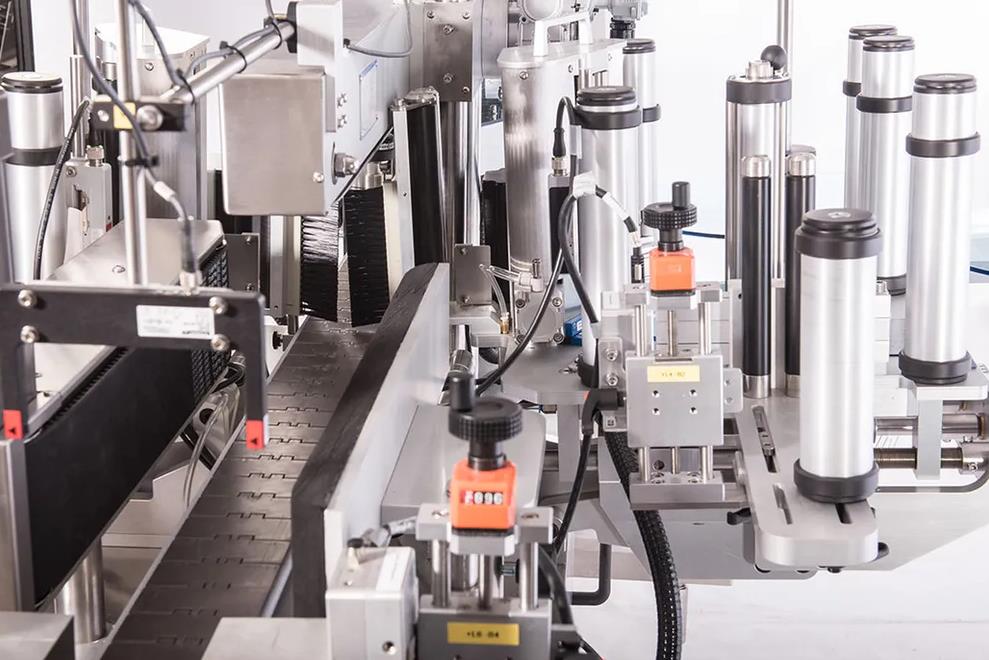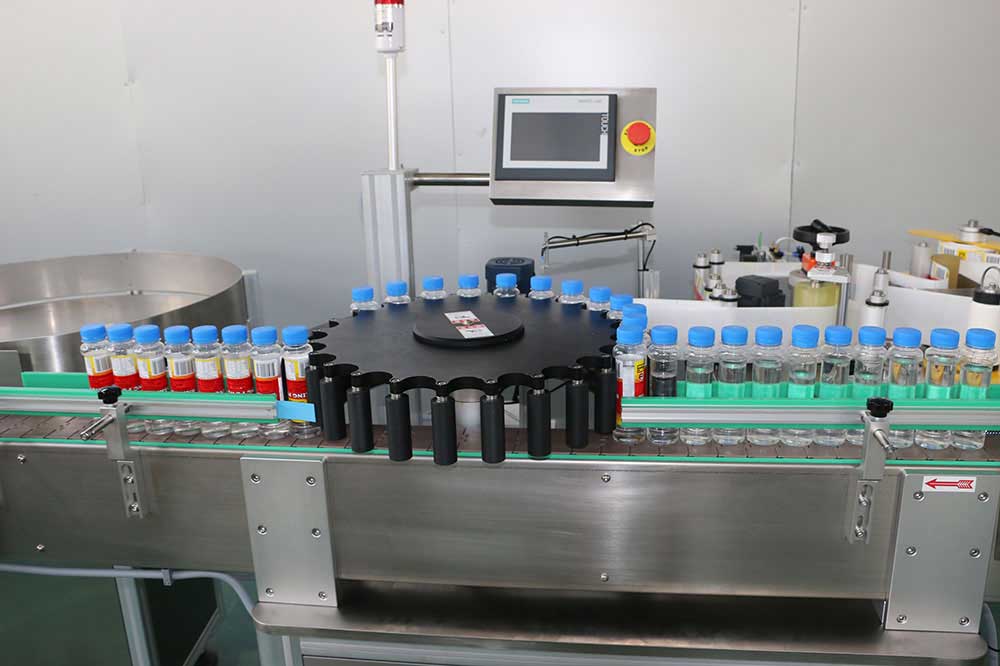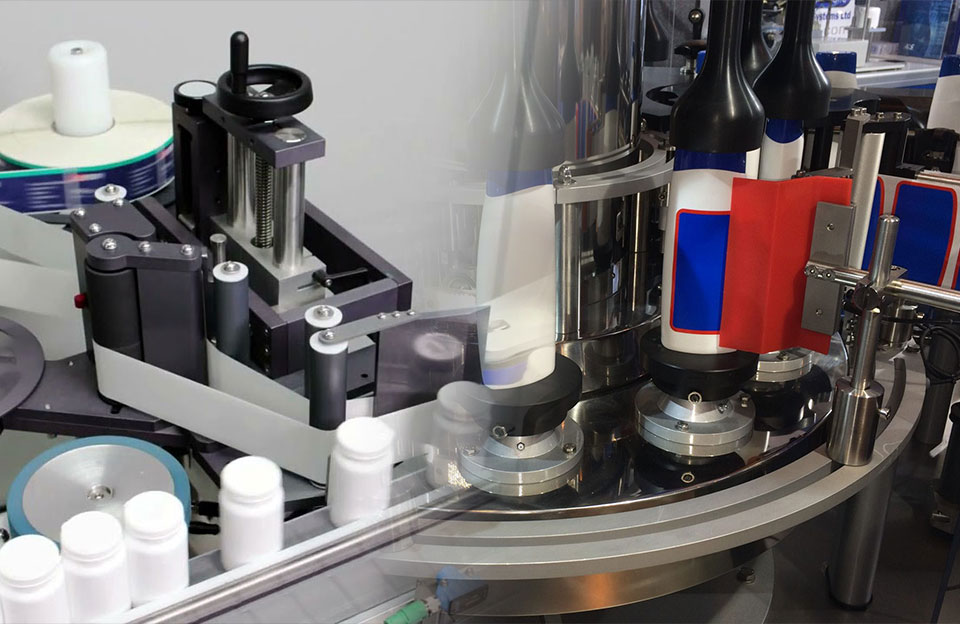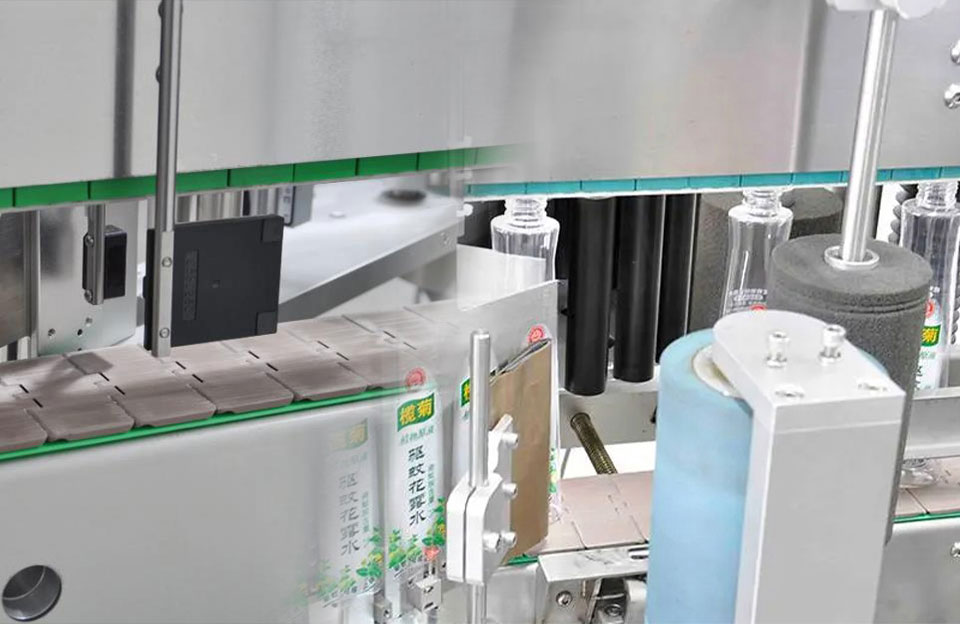A labeling machine is a special device that labels products, containers, or packaging materials. Labeling machines play a vital role in automating the labeling process and increasing manufacturing and packaging operations’ efficiency, accuracy, and productivity.
According to the type, it can be divided into linear and rotary labeling machines. Both linear and rotary labeling machines are used in industrial settings to apply labels to a variety of products and containers. Linear and rotary labeling machines are automated systems that reduce the need for manual labor in the labeling process. But there are also differences between them, this post introduces the differences between linear and rotary labeling machines.
Features of Linear and Rotary Labeling Machines
Linear Labeling Machines
A linear labeling machine, also known as an inline labeling machine, is a label applicator that applies labels to products or containers in a linear fashion, typically in a straight line. It is a popular choice for industries with relatively lower production speeds or when the packaging line operates in a single direction.
Key features of a linear labeling machine:
- Single Line Operation: Linear labeling machines apply labels to products in a linear, sequential manner, making them suitable for production lines with a straightforward flow.
- Conveyor System: These machines often have a conveyor system to smoothly move products through the labeling process.
- Label Application Mechanism: Linear labeling machines can use various labeling methods, such as pressure-sensitive adhesive, hot-melt adhesive, or glue, to accurately label products.
- Manual or Automatic Loading: Some linear labelers require manual loading of products onto the conveyor, while others can be integrated with automatic feeding systems for continuous operation.
- Compact Design: Linear labeling machines are generally more compact than rotary labeling machines, making them suitable for smaller production spaces or when space is limited.

Linear Labeling Machines
Rotary Labeling Machines
A rotary labeling machine, or a wrap-around labeling machine, is designed to apply labels to cylindrical containers as they rotate. It is ideal for high-speed production lines and offers efficient labeling of round or curved products.
Key features of a linear labeling machine:
- Circular Label Application: Rotary labeling machines apply labels around the circumference of cylindrical containers, such as bottles, jars, and tubes, as they rotate on the conveyor.
- High-speed Operation: These machines are designed for high-speed labeling applications, making them suitable for industries with large production volumes.
- Multiple Labeling Stations: Rotary labelers may have multiple labeling stations, allowing them to simultaneously apply multiple labels to different parts of the container.
- Servo-driven Labeling Heads: Advanced rotary labeling machines often use servo-driven labeling heads for precise label application and smooth synchronization with container rotation.
- Integration Capabilities: Rotary labelers can be easily integrated into existing high-speed packaging lines. Both linear and rotary labeling machines can be integrated with filling machines, capping machines and other machines to achieve seamless operation.

Rotary Labeling Machines
The Differences Between Linear and Rotary Labeling Machines
- Label Application Method:
- Linear labeling machines apply labels to products or containers in a linear, sequential manner. The containers move straight through the labeling station, where the labels are applied one after another.
- Rotary labeling machines apply labels to cylindrical containers as they rotate. The containers move in a circular motion on the conveyor, and the labels are wrapped around the circumference of the containers.
- Container Handling:
- Linear labelers are suitable for products or containers that are easily handled and labeled linearly. They work well for flat-sided or rectangular containers and some cylindrical containers with limited curvature.
- Rotary labelers are designed specifically for round or cylindrical containers. They are not well-suited for flat-sided or rectangular containers.
- Production Speed:
- Linear labeling machines are generally suitable for moderate production speeds. While they are efficient, they may not match the high-speed capabilities of rotary labelers.
- Rotary labeling machines are known for their high-speed capabilities. They are designed to handle high-volume production lines efficiently.
- Space Requirements:
- Linear labeling machines are typically more compact than rotary labelers, making them suitable for smaller production spaces or when space is limited.
- Rotary labelers are larger and more complex than linear labelers due to their circular labeling process, requiring more space in the production area.
- Applications:
- Linear labelers are commonly used for industries with moderate production volumes and relatively lower labeling requirements, such as small to medium-sized food and beverage production lines, pharmaceuticals, cosmetics, household chemicals, and small-scale bottling operations.
- Rotary labelers are commonly used in industries with high production volumes and high-speed labeling requirements, such as beverage bottling plants, pharmaceutical industries, cosmetics, and chemical packaging.
Conclusion
Both linear and rotary labeling machines have their characteristics and are suitable for different occasions. The choice between the linear and rotary labeling machines depends on the specific labeling needs, production volume, container shape, and available space in the production facility.


